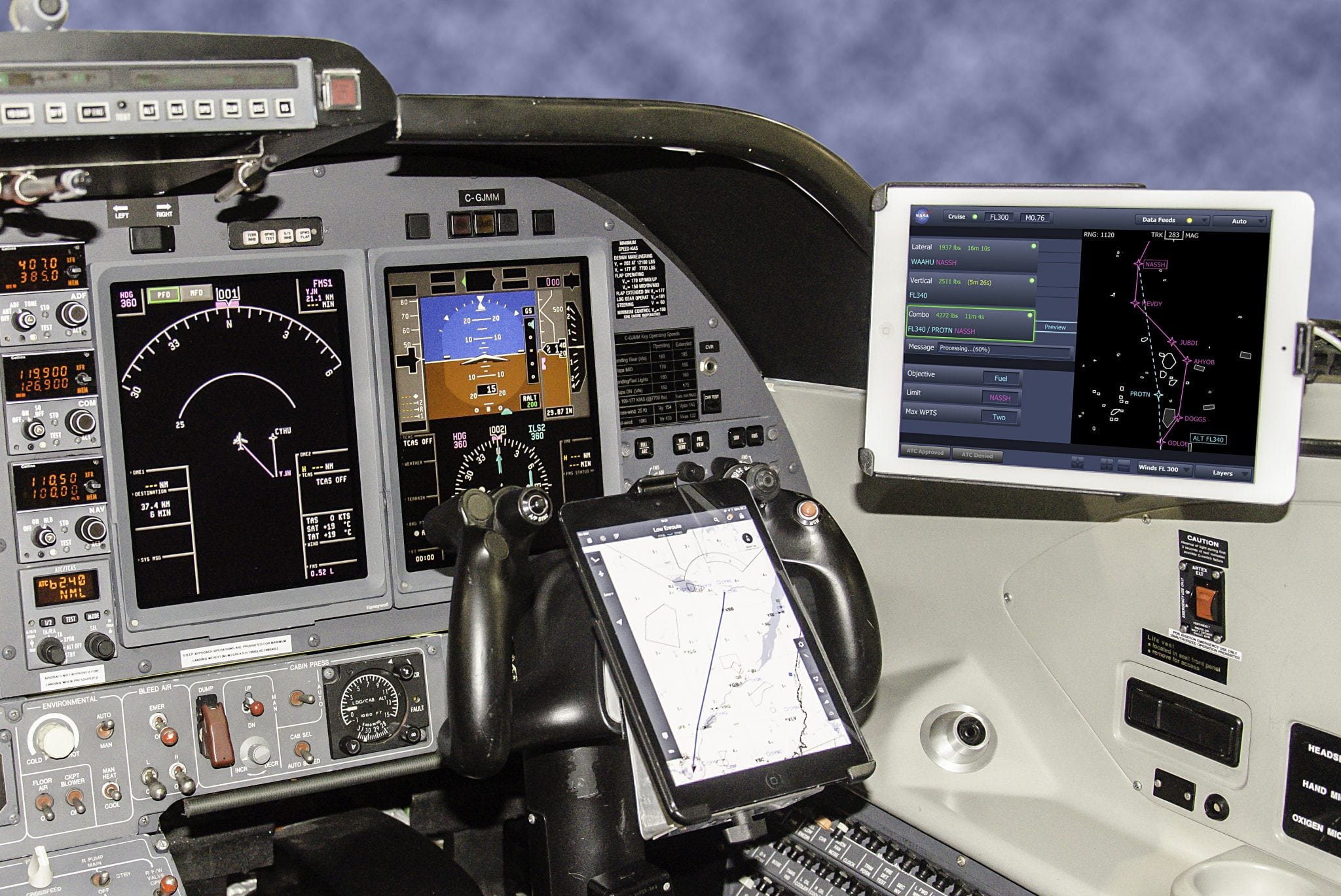 |
| NASA’s TASAR application can be seen in the far right screen. Photo: NASA/David C. Bowman |
[Avionics Today 09-23-2015] Two passenger airlines will soon test NASA-developed software designed to help air carriers save time and reduce fuel consumption and carbon emissions. During the next three years, Virgin America and Alaska Airlines will use the Traffic Aware Planner (TAP) application, to make Traffic Aware Strategic Aircrew Requests (TASAR).
“TAP connects directly to the aircraft avionics information hub on the aircraft,” said David Wing, TASAR project lead at NASA’s Langley Research Center in Hampton, Va. “It reads the current position and altitude of the aircraft, its flight route, and other real-time information that defines the plane’s current situation and active flight plan. Then it automatically looks for a variety of route and/or altitude changes that could save fuel or flight time and displays those solutions directly to the flight crew.”
TAP also can connect with the plane’s Automatic Dependent Surveillance-Broadcast (ADS-B) receiver and scan the ADS-B signals of nearby air traffic to avoid potential conflicts in any proposed flight path changes, making it easier for Air Traffic Controllers (ATCs) to approve a pilot’s route change request.
For airlines with Internet connectivity in the cockpit, TAP also can access information — such as real-time weather conditions, wind forecast updates, and restricted airspace status — to further increase flight efficiency. The software is loaded onto a tablet computer, which many airline pilots already use for charts and flight calculations.
NASA has tested the TASAR software twice aboard a Piaggio P180 Avanti aircraft, a high-performance technology test bed owned and operated by Advanced Aerospace Solutions. The system reportedly worked well on its initial test flight from Virginia to Kentucky.